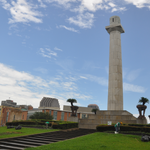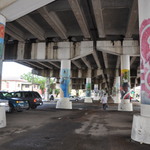2020 Urban Research Award: Cities and Alternative Spaces of Memory: Monuments and Counter-Monuments in New Orleans
PI: Cynthia Becker, PhD, Associate Professor of African Art, Department of History of Art & Architecture, affiliated with the African Studies Center and the African American Studies Program

Despite public outcry from some quarters, the New Orleans City Council voted to remove four monuments to the Confederacy in 2015. Cynthia Becker’s project, “Cities and Alternative Spaces of Memory: Monuments and Counter-Monuments in New Orleans,” uses the current debate around Confederate monuments as a springboard to consider the role counter-monuments play in urban environments, looking at them as structures and performances created to preserve marginalized histories. This project looks at how people have begun to reconsider their relationships to urban monuments and the political figures they memorialize and asks how we can rewrite the history of our cities to include multiple voices, including those often left out of official archives.



View more projects funded through our Early Stage Urban Research Awards